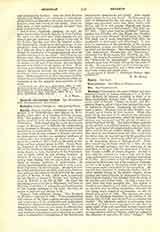

Epping, JOSEPH, German astronomer and Assyriologist, b. at Neuenkirchen, near Rheine in Westphalia, December 1, 1835; d. at Exaeten, Holland, August 22, 1894. His parents died while he was very young and he owed his early education to the fostering care of relations. After completing the usual gymnasium course at Rheine and at Münster he matriculated at the academy in Münster, where he devoted himself particularly to mathematics. In 1859 he entered the novitiate of the Society of Jesus in Münster and after his philosophical studies was appointed professor of mathematics and astronomy at Maria-Laach. He spent the years from 1867 to 1871 in the study of theology and was ordained priest in 1870. Garcia Moreno, President of Ecuador, had petitioned the General of the Jesuits in the early seventies for members of the Society to form the faculty of the Polytechnicum at Quito, which he had recently founded. A number of German Jesuits responded to the call, among them Epping, who set out in June, 1872, for Quito to become professor of mathematics. He quickly learned Spanish and was able to write a textbook of geometry in that language. He likewise took an active part in all the scientific work of the Fathers. The political disturbances which followed the assassination of Moreno (August 6, 1875) made it necessary for the Jesuits to return to Europe, and Epping arrived in Holland in the fall of 1876. He spent the remaining years of his life at Blijenbeck, and later at Exaeten, as professor of astronomy and mathematics to the younger members of his order, devoting his leisure to research and literary work.
Epping’s first published volume, “Der Kreislauf im Kosmos”, appeared in 1882. It was an exposition and critique of the Kant-Laplace nebular hypothesis and a refutation of the pantheistic and materialistic conclusions which had been drawn from it. His most important work, however, was begun in collaboration with Father Strassmaier who, in connection with his cwn studies in Assyriology, had induced him to undertake a mathematical investigation of the Babylonian astronomical observations and tables. After considerable labor the key was found. He discovered the table of differences for the new moon in one of the tablets and identified Guttu with Mars, Sakku with Saturn, and Te-ut with Jupiter (Epping and Strassmaier in “Stimmen aus Maria-Laach“, Vol. XXI, pp. 277-292). Eight years later he published “Astronomisches aus Babylon oder das Wissen der Chaldäer über den gestirnten Himmel” (Freiburg im Br., 1889). This work was of much importance both from the standpoint of astronomy and chronology. It contains an exposition of the astronomy of the ancient Babylonians, worked out from their Ephemerides of the moon and the planets. This was supplemented by “Die babylonische Berechnung des Neumondes” (Stimmen aus Maria-Laach, Vol. XXXIX, pp. 225-240). He was also the author of a number of articles in the “Zeitschrift für Assyriologie”. Father Epping suffered much from ill-health during the last years of his life. He was none the less a man of untiring activity and combined geniality and a keen sense of humor with a deep and simple piety.
H. M. BROCK

